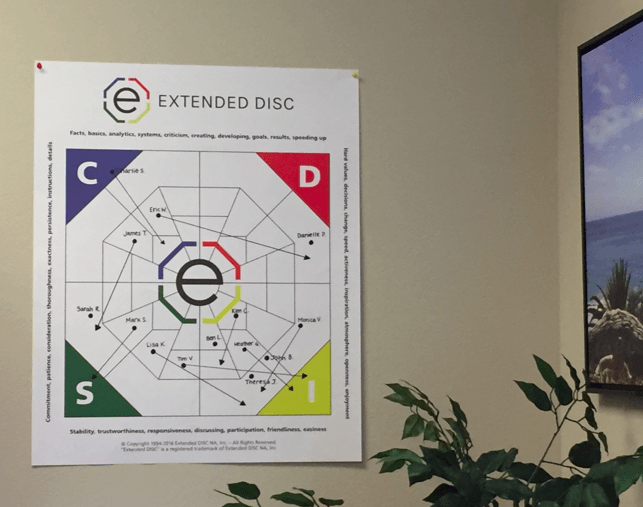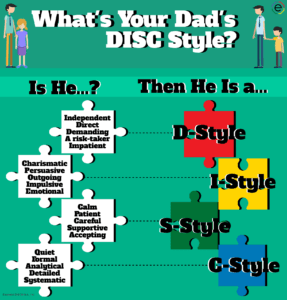The DISC Assessment Tool looks at your natural behavioral style in a variety of formats. How you use your DISC profile results is up to you.
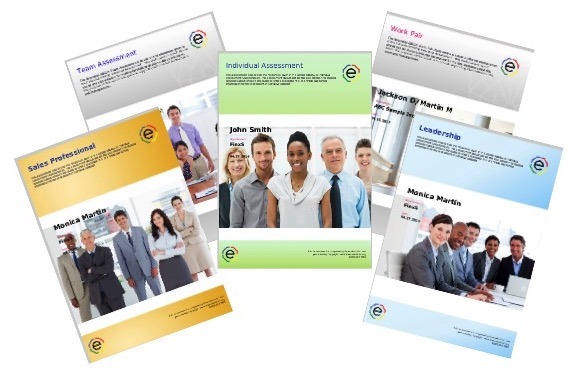 Understanding who you are, what you can do, and what you have to offer is important, but there is more to the equation than that. You also need to know how to use all of that information in the way you work with others. That gives you the opportunity to find a field you can thrive in. You can use it to find work that would make the best use of all your talents. The DISC Assessment Tool can provide you with that knowledge. In addition, you can learn some of the best ways to succeed in the workplace and in other significant areas of your life.
Understanding who you are, what you can do, and what you have to offer is important, but there is more to the equation than that. You also need to know how to use all of that information in the way you work with others. That gives you the opportunity to find a field you can thrive in. You can use it to find work that would make the best use of all your talents. The DISC Assessment Tool can provide you with that knowledge. In addition, you can learn some of the best ways to succeed in the workplace and in other significant areas of your life.
How the DISC Assessment Tool Works
The DISC test is just 24 questions, and your answers help generate your DISC profile. You’ll receive your validated behavioral DISC profile results in as little as 10 minutes.
Your DISC results will help you find a deeper depth of knowledge about yourself. It’s not about changing you, but you may decide to make some daily adjustments to your DISC style. You may even find that you’d be better suited for a different job or role. How your DISC profile relate to what you are currently doing with your life? The final goal is to determine if there’s something more you can do to succeed.
What the DISC Assessment Tool Really Measures
The DISC types are all based on our behaviors, and looks to tell a person who they really are. People may say they are a certain way. However, what they say and what they do may not match up well. People are what they do, not what they say. By honestly answering the DISC test questions, a person can discover who they actually are. In many cases, this can be a very freeing experience. Once people start to recognize some of their behaviors then they can better understand why they prefer do things a certain way.
 Behaviors that some people carry out through the day may not be what are the most suitable. They can lead to a lot of problems. Introverts with outgoing sales jobs may struggle, for example. So can people who are naturally friendly and fun-loving, but are forced by job circumstances to keep their head down and be quiet. No matter which way a person naturally is, asking them to be someone else for the sake of a job or some type of relationship never really works in the long term. People are drained of energy and not happy, and their performance in that role will suffer because of it.
Behaviors that some people carry out through the day may not be what are the most suitable. They can lead to a lot of problems. Introverts with outgoing sales jobs may struggle, for example. So can people who are naturally friendly and fun-loving, but are forced by job circumstances to keep their head down and be quiet. No matter which way a person naturally is, asking them to be someone else for the sake of a job or some type of relationship never really works in the long term. People are drained of energy and not happy, and their performance in that role will suffer because of it.
What To Do With the Information
There are two things that can be done with the DISC profiles results. People can either change their circumstances to better fit who they are, or they can temporarily adjust who they are to better fit their situation. It’s no secret that the same person may act differently in one situation as opposed to another. How you act when you are at work is likely quite different than how you act when out with friends on a weekend night. This does not mean you are two different people, but only that your behavior is affected by the situational awareness you have.
When you know the DISC types and you understand what the DISC Assessment Tool can offer you, whole new worlds can open up. You need to know who you are and what you offer. In addition, you need to know why you feel uncomfortable in certain situations or what you need to change in order to see the success you are looking for. With that in mind, you can get the results of the assessment and use them to better your life and the lives of the people you interact with on a daily basis. Whether it is at work or in a personal relationship, what you know about yourself and your behavior goes a long way toward how you act.
Our Patterns of Behavior: How We Handle Stress
Stress affects how a person acts. Our natural style most often shows up under pressure. Hence, we become more of who we are, which may not be a good thing. Additionally, there may be behaviors that not everyone realizes they are engaging in. In other words, force of habit. Because this happens to people quite frequently and easily, these behaviors are often no longer questioned by the person. The DISC assessment helps identify those behaviors so the person realizes them, and that can make a difference when it comes to acknowledging potential issues that have to be worked on and behavioral quirks that need to be changed.
One thing really stands out in a person’s behavior pattern: what happens to them when they are under a lot of stress or pressure. Getting angry and yelling at people when under pressure, for example may not be a good thing when there are coworkers around. What can we proactively do to prevent certain behaviors from showing up when we are under pressure?
Our Patterns of Behavior: Spontaneity
Another thing that stands out in a person’s behavior pattern: how they spontaneously react to something, good or bad. What if you loose it and start yelling at your boss, client or customer? That could end badly. It is not always easy to temper these reactions, but it is very important to working in a good environment. Spontaneity can be very problematic when it comes to things like work environments.
Additionally, some people may spontaneously react to something in a way that is not appropriate for the circumstances. When they do that, they risk saying or doing something that could cause problems for themselves or others. While it can be difficult to simply avoid or retrain a spontaneous reaction, there are ways to do so. When you see what that reaction really is, and that it is a concern based on how other people respond to your reaction, there is a realization that comes along with that. This realization can be the beginning of making a change that will benefit you and the people around you.
How to Better Manage Stress and Spontaneity

Working under pressure is not necessarily a bad thing. People who are more spontaneous can find positive benefits. The goal of the DISC Assessment Tool is not to ask you to become someone else. It’s not about changing your entire life, personality, behavior, and way of doing things. Instead, it helps you be more self-aware and identify behaviors you actually have. Then you can use that information to make important changes in your life. These changes may be moving to a different job or out of a particular relationship, or the changes may only be adjusting how you respond to something in your current circumstances.
Either way, you will have the knowledge and tools you need to move forward and make adjustments to your life that will make things better and more secure for you going forward. Overall, there are many different ways to look at your success levels and measure how you are doing in life, but there are limited numbers of tools that are focused on the why behind that performance. When people are asked or forced to change without understanding the value of it based on their current behavioral style, that change can be more difficult and complicated. There may also be confusion and frustration.
Eliminate the Confusion With Better Understanding
Confusion lies at the heart of many problems with behavior. People may not understand why others act in particular ways. They also do not understand why they choose to act in certain ways. They may keep doing something they really do not care about, or stop doing something they like, because of societal pressure or other factors, without really having an understanding of what makes them choose these options. The more you know about your natural style, the easier it will be to address them more effectively and really determine any true changes that need to be made.
Anytime a person needs to make changes in their life, doing so can be difficult. The DISC assessment tool provides you with the level of knowledge you need about your natural behaviors to determine what, if anything, you should be working on or doing differently. No one is perfect, and different situations call for different choices. With that in mind, you will want to focus your efforts on adjusting the areas that are problematic and emphasizing the areas where performance and happiness are already at higher levels. Some small course corrections may be all that is necessary, or more self-development may needed.
Everyone Has Strengths and Weaknesses
A person may excel at certain things, but it’s also likely there are areas the person needs to develop. Because everyone has areas where they are strong and areas where they are weak, a good understanding of what those areas are matters. Additionally, people have things that motivate them to do better, and things that turn them away from a particular activity, person, or idea, as they lose interest very quickly. Finding what is motivating can be important, but so can finding what is demotivating. Both should be considered carefully, and that cannot be done if that information is not actually known.
DISC Assessment tools help identify what motivates and demotivates a person. In addition, the DISC report can show development areas where a person needs to do better and the strengths that they already have. One or two of these factors is only part of the story, and the whole picture is really needed in order to have a good measure of success. By only focusing on one or two areas, other issues get pushed aside. In many cases, it is these secondary issues that continue to appear and cause problems in a person’s life. Finding out about them and addressing them can be the way to make sure corrections are being made the right way.
What Does the DISC Assessment Tool Offer?
All DISCs are not created equal. With Extended DISC, there are more options. The more customized an assessment is, the better a person can tell where any issues or concerns actually lie. The look and the content of the assessment can both be customized. The array of choices can benefit the respondent and the company. The DISC knowledge can aid the individual, but it can also have a big impact on a company. The company can then place people in the right roles for their DISC style.
A company has a better chance of success if it incorporates DISC into the organization. Leaders and managers can use DISC data to find people who fit the roles they will be asked to play. Employees then have a much better chance of thriving in their job roles. There are many individual DISC assessments, but there are also team, department, organization, and work-pair assessments. In short, the DISC Assessment Tool does not have to be just about one person. It can be about an aspect of a company. Are there more that needs to be done to help a particular team or department work better as a unit? Changes may need to be made to improve the company as a whole.
The More Comprehensive, the Better?
In most cases, a more comprehensive report can be helpful. But there are times when you only need the basics to get started. Just the facts. You can tailor the DISC Assessment Tool. Do you need a short report or one that provides a lot more detail? You can focus on specific information and only what you need to know. It is a great way to get the information you want to help an employee or an entire organization. Overall, more detail is generally a good thing and should be explored, because it gives a higher level of understanding. When you only need to know the overview, though, the DISC Assessment Tool can also give you that.
Being able to tailor an assessment tool to what you really need to know is important. Many ways of assessing people and groups do not offer that. Other DISC tools may either provide information that feels intrusive and is not necessary. In addition, they may not provide enough detail to really understand how they arrived at a certain conclusion. It is much easier to discount information if it feels like it does not come from a trusted source, or from a true base of knowledge. This is also true with a high level of detail that feels like space filler instead of value. DISC offers options so individuals and companies can use it in the most effective way.
What you Think and What You Actually Need
The most important thing to understand about the DISC Assessment Tool is that it offers a way to really know yourself or your employees. With Extended DISC, you can get a wealth of information which can also be customized. That can be extremely valuable when it comes to placing a person in a certain role. Furthermore, it can help identify and understand why a specific team seems to have trouble working together. Maybe something as simple as changing a couple of people around and putting them on different teams would be enough to make the organization much more effective. That is what DISC can tell you.
Learning who you are and what your DISC style really says about you can make a difference in your work and your personal life. Why would you not want to know these things, in order to make your life better? There are many ways to make changes, but all too often people don’t make effective changes. They may change what they think they need, instead of determining what they actually need. Once they understand the truth behind their behavior, they are much better able to choose something that will work for them, instead of just picking something to work on because they are struggling and unsure how to correct it.
So, What Does It All Boil Down To?
Behavioral issues may be a symptom of something greater. A person can work on the behavior, but it may not fix the actual problem. Issues could manifest in other areas, instead. But when you understand more about your actual DISC style, and how that relates to the behaviors you engage in, you are well on your way toward making permanent, lasting changes. These adjustments can make your work life and personal dealings more fulfilling. This takes work, but you have to truly understand the problem before you can begin to solve it.
Change isn’t easy if you don’t know you’re doing something or why it’s even an issue. It may not even make sense. Instead of simply muddling along and failing at change, take the DISC test. Let it tell you who you are, and who you can be.
 Knowing who you are to the best of your ability before a job interview is probably the best advice I can give. It seems simple, right? Who know yourself better than you? Sometimes it is not. Many people aren’t fully self-aware, and I know that sounds harsh, but it is true. The Extended DISC Individual Assessment can help you increase your self-awareness. First, it tells you your natural DISC profile. In return, the report gives you a breakdown of how you prefer to behave and do things.
Knowing who you are to the best of your ability before a job interview is probably the best advice I can give. It seems simple, right? Who know yourself better than you? Sometimes it is not. Many people aren’t fully self-aware, and I know that sounds harsh, but it is true. The Extended DISC Individual Assessment can help you increase your self-awareness. First, it tells you your natural DISC profile. In return, the report gives you a breakdown of how you prefer to behave and do things.


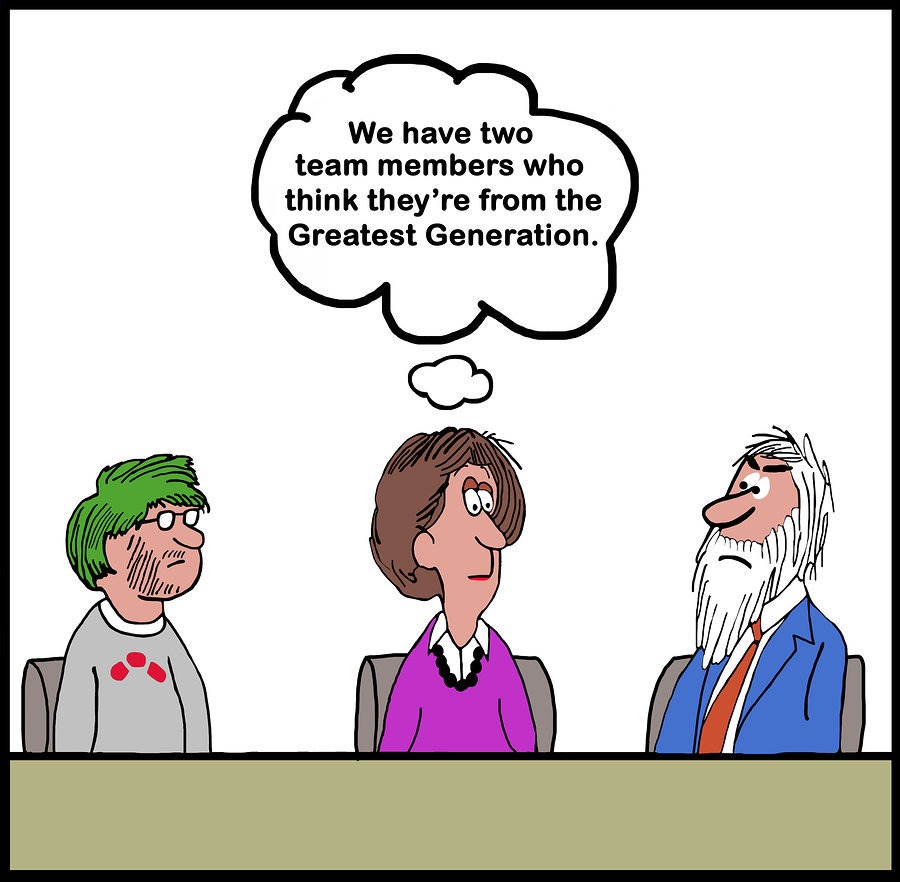

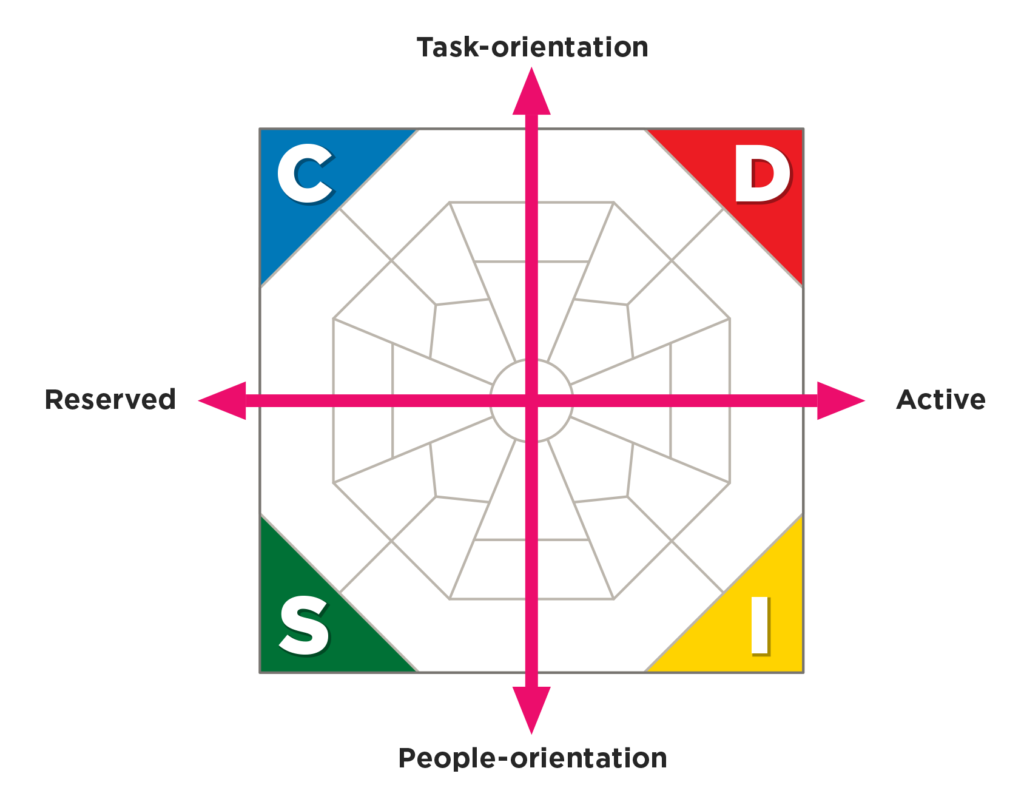 The
The 
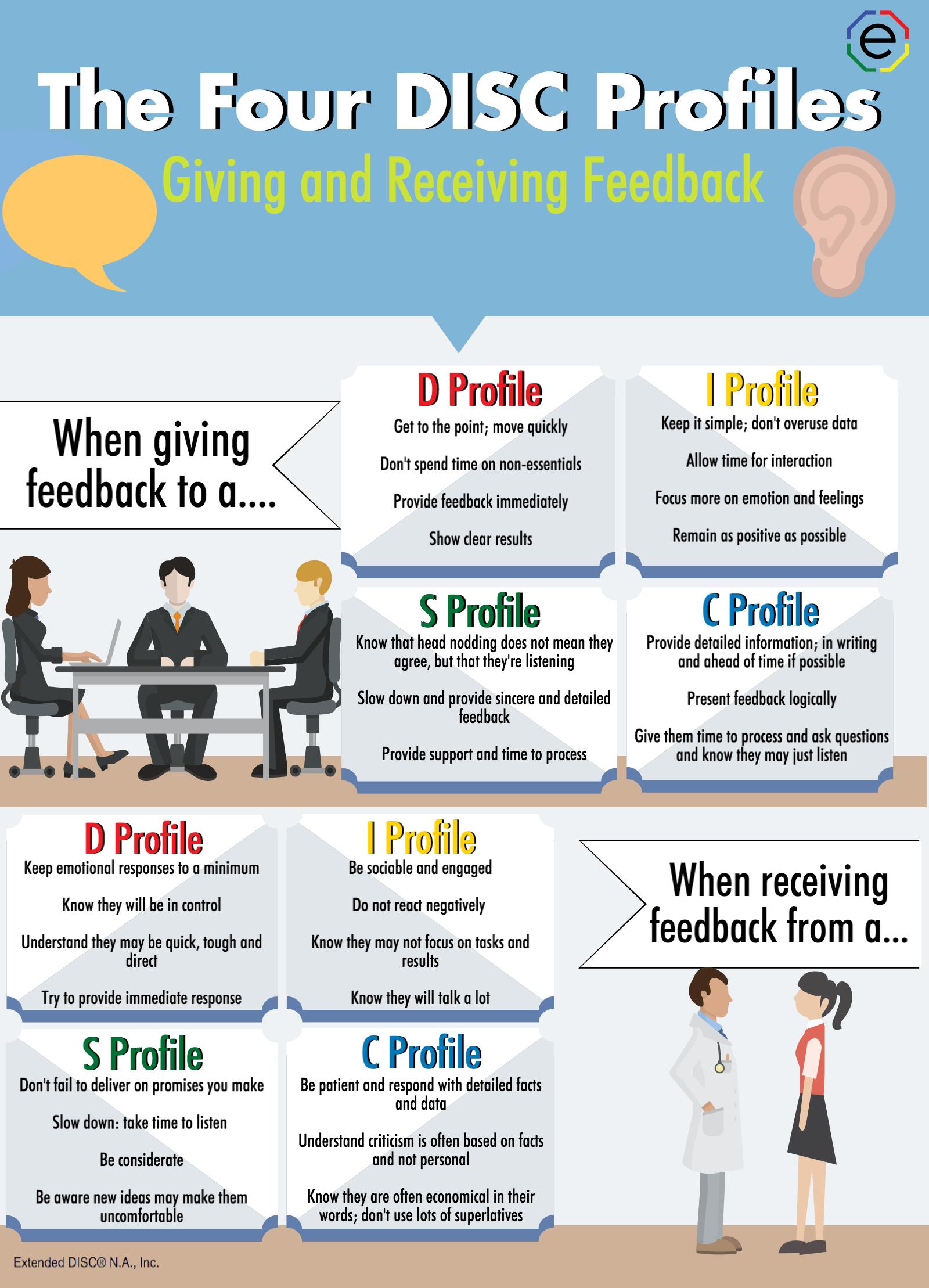
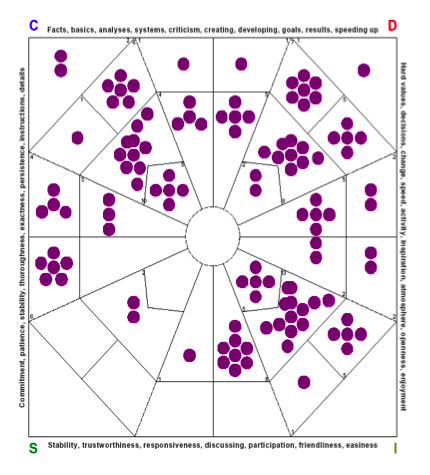
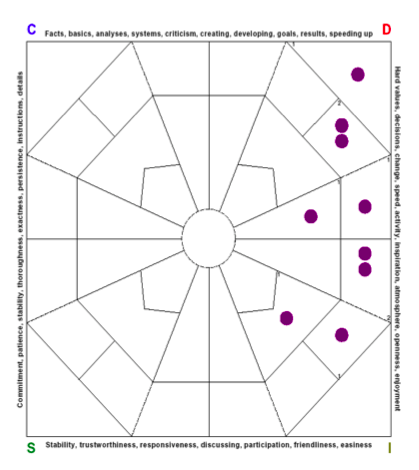
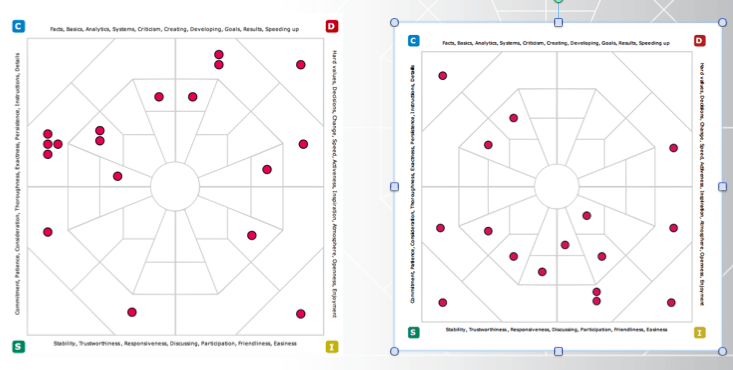
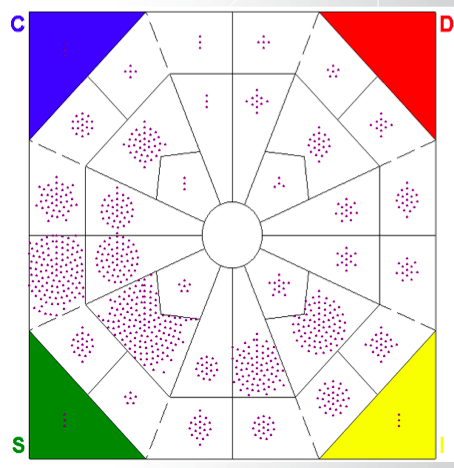
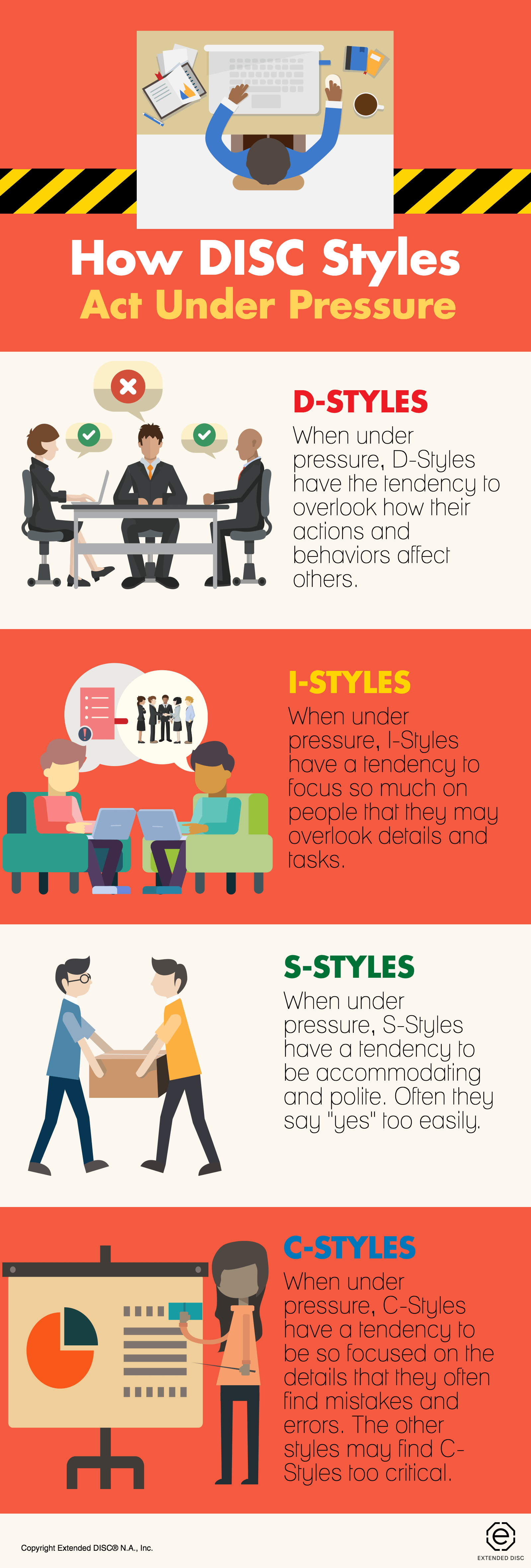
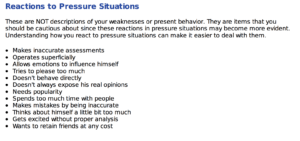
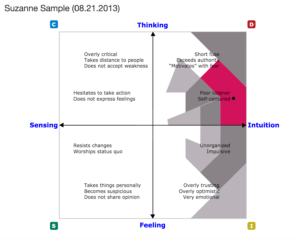

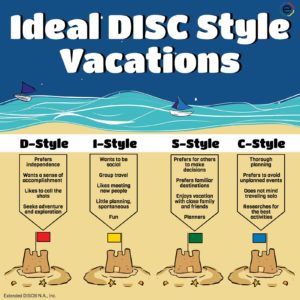
 High-D folks actively seek adventure and exploration in every aspect of life. Vacations are no exception. This DISC style thrives on independence and picking their own activities. They’ll need plenty to do on vacation to keep them busy and happy. Lounging on the beach or by the pool may work for a while, but a D-profile person is going to enjoy activities and exploration more. They may prefer scuba diving, mountain climbing, and even exploring a new, foreign city on foot. They want to be in control or at least feel as if they are. Plan a D-style vacation that is active and provides him/her with a sense of accomplishment.
High-D folks actively seek adventure and exploration in every aspect of life. Vacations are no exception. This DISC style thrives on independence and picking their own activities. They’ll need plenty to do on vacation to keep them busy and happy. Lounging on the beach or by the pool may work for a while, but a D-profile person is going to enjoy activities and exploration more. They may prefer scuba diving, mountain climbing, and even exploring a new, foreign city on foot. They want to be in control or at least feel as if they are. Plan a D-style vacation that is active and provides him/her with a sense of accomplishment.


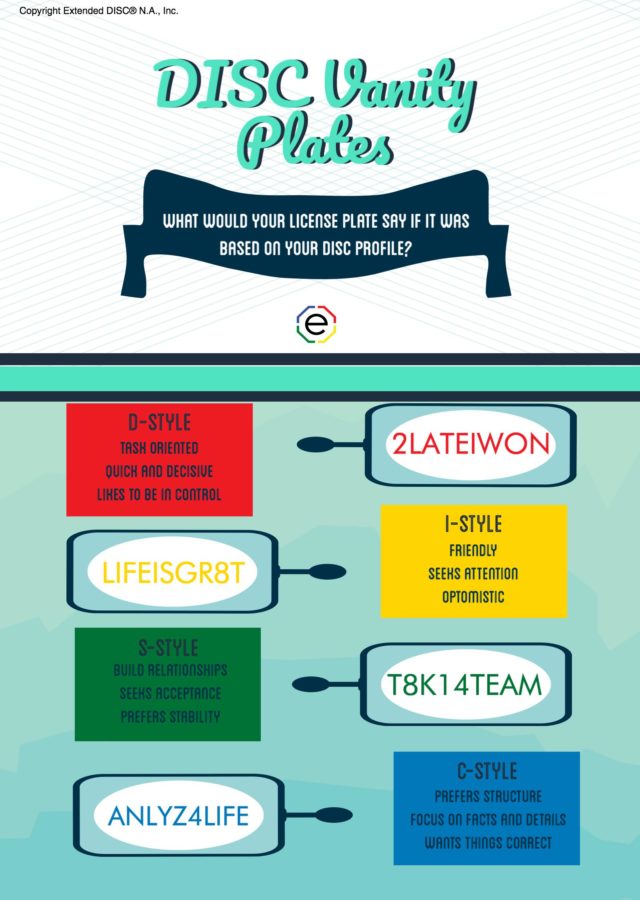

 Understanding who you are, what you can do, and what you have to offer is important, but there is more to the equation than that. You also need to know how to use all of that information in the way you work with others. That gives you the opportunity to find a field you can thrive in. You can use it to find work that would make the best use of all your talents. The DISC Assessment Tool can provide you with that knowledge. In addition, you can learn some of the best ways to succeed in the workplace and in other significant areas of your life.
Understanding who you are, what you can do, and what you have to offer is important, but there is more to the equation than that. You also need to know how to use all of that information in the way you work with others. That gives you the opportunity to find a field you can thrive in. You can use it to find work that would make the best use of all your talents. The DISC Assessment Tool can provide you with that knowledge. In addition, you can learn some of the best ways to succeed in the workplace and in other significant areas of your life. Behaviors that some people carry out through the day may not be what are the most suitable. They can lead to a lot of problems. Introverts with outgoing sales jobs may struggle, for example. So can people who are naturally friendly and fun-loving, but are forced by job circumstances to keep their head down and be quiet. No matter which way a person naturally is, asking them to be someone else for the sake of a job or some type of relationship never really works in the long term. People are drained of energy and not happy, and their performance in that role will suffer because of it.
Behaviors that some people carry out through the day may not be what are the most suitable. They can lead to a lot of problems. Introverts with outgoing sales jobs may struggle, for example. So can people who are naturally friendly and fun-loving, but are forced by job circumstances to keep their head down and be quiet. No matter which way a person naturally is, asking them to be someone else for the sake of a job or some type of relationship never really works in the long term. People are drained of energy and not happy, and their performance in that role will suffer because of it.
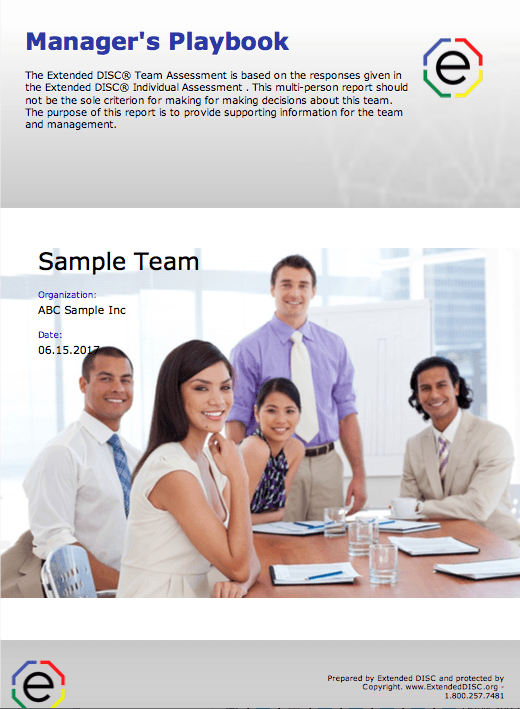 We take all the team members’ individual results and create the team report. This Team DISC Assessment is not designed for the team, but for the manager. However, there are similar sections and graphs to the standard team report.
We take all the team members’ individual results and create the team report. This Team DISC Assessment is not designed for the team, but for the manager. However, there are similar sections and graphs to the standard team report.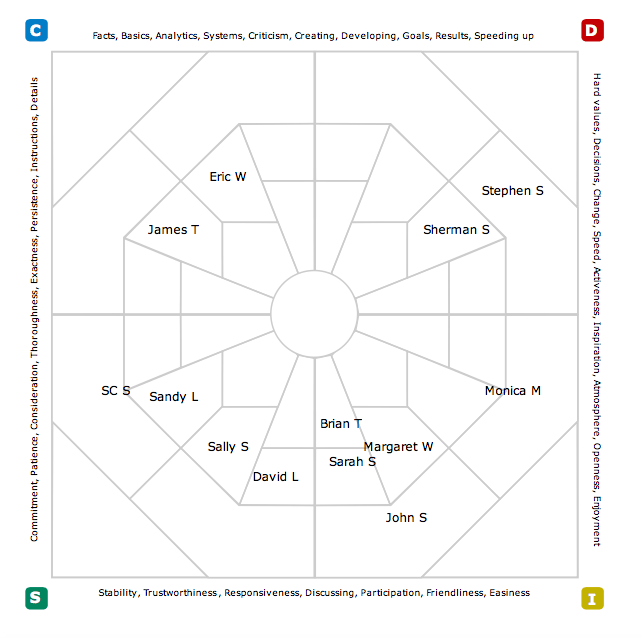 The Name Map is a great place to start to elevate the performance of the team. Managers will view the Manager’s Report differently from the team members. Team members and managers have different motivators and viewpoints. Hence, the meaning of the data will be different as well. Managers may not find the Shotgun Map as helpful since they already know where their employees’ natural DISC styles are. As a manager or coach, you want to know what kinds of styles you have on your team.
The Name Map is a great place to start to elevate the performance of the team. Managers will view the Manager’s Report differently from the team members. Team members and managers have different motivators and viewpoints. Hence, the meaning of the data will be different as well. Managers may not find the Shotgun Map as helpful since they already know where their employees’ natural DISC styles are. As a manager or coach, you want to know what kinds of styles you have on your team.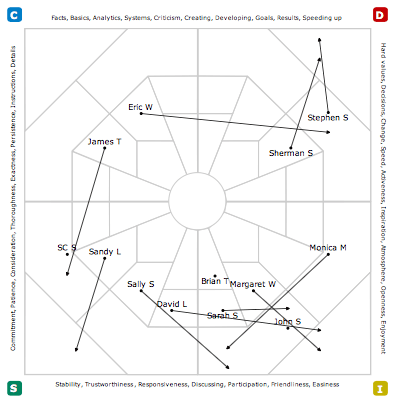 Look at the Arrow Map from the viewpoint of the manager because the interpretation will be different. The arrows for team member reflects how they feel they would need to adjust their natural DISC style to succeed in their present environment.
Look at the Arrow Map from the viewpoint of the manager because the interpretation will be different. The arrows for team member reflects how they feel they would need to adjust their natural DISC style to succeed in their present environment.